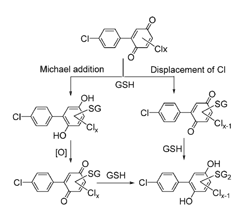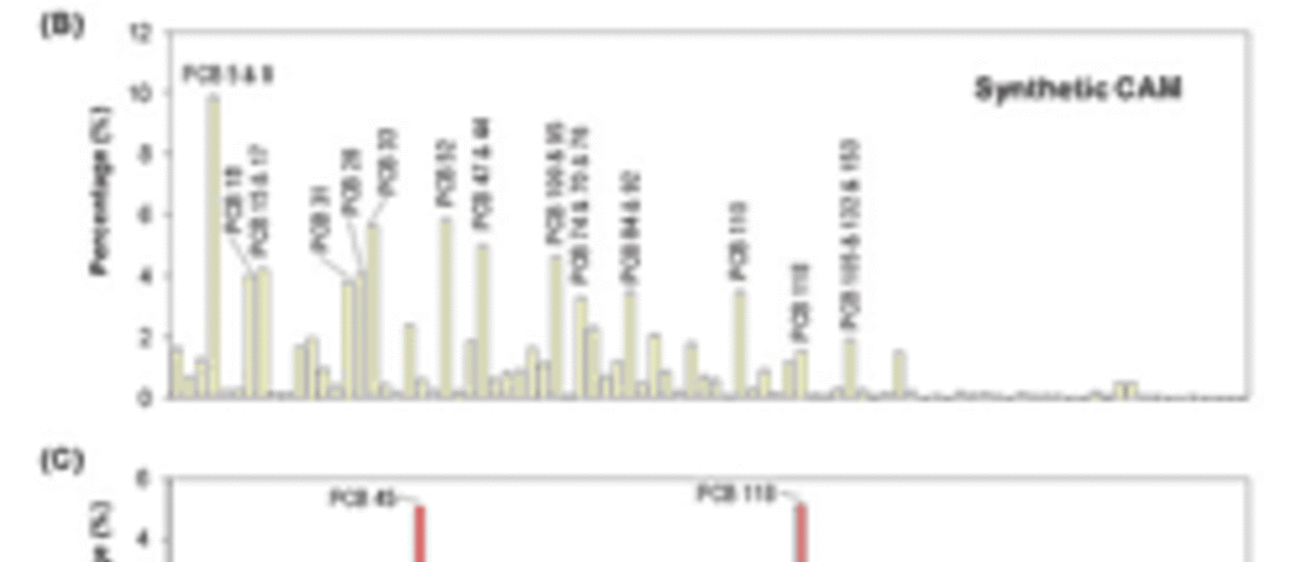Main navigation
Studies of environmental and toxic effects of polychlorinated biphenyls (PCBs) are ideally performed with PCB mixtures reflecting the composition of environmental PCB profiles to mimic actual effects and to account for complex interactions among individual PCB congeners. Unfortunately, only a few laboratory studies employing synthetic PCB mixtures have been reported, in part because of the challenges associated with the preparation of complex PCB mixtures containing many individual PCB congeners.
The objective of this study was to develop a PCB mixture that resembles the average PCB profile recorded from 1996 to 2002 at a satellite station of the Integrated Atmospheric Deposition Network located at the Illinois Institute of Technology (IIT) in Chicago, Illinois, using commercial PCB mixtures. Initial simulations, using published Aroclor profiles, showed that a mixture containing 65% Aroclor 1242 and 35% Aroclor 1254 was a good approximation of the target profile. A synthetic Chicago air mixture (CAM) was prepared by mixing the respective Aroclor’s in this ratio, followed by GC/MS/MS analysis. Comparison of the PCB profile of the synthetic mixture with the target profile suggests that the synthetic PCB mixture is a good approximation of the average IIT Chicago air profiles (similarity coefficient cos θ = 0.82; average relative percent difference = 84%). The synthetic CAM was also a reasonable approximation of the average of 184 PCB profiles analyzed in 2007 at 37 sites throughout Chicago as part of the University of Iowa Superfund Research Program (isrp), with a cos θ of 0.70 and an average relative percent difference of 118%.
While the CAM and the two Chicago air profiles contained primarily di- to pentachlorobiphenyls, higher chlorinated congeners, including congeners with seven or eight chlorine atoms, were underrepresented in the synthetic CAM. The calculated TCDD toxic equivalency quotients of the synthetic CAM (2.7 ng/mg PCB) and the IIT Chicago air profile (1.6 ng/mg PCB) were comparable, but lower by two orders of magnitude than the isrp Chicago air profile (865 ng/mg PCB) due to surprisingly high PCB 126 levels in Chicago air. In contrast, the calculated neurotoxic equivalency quotients of the CAM (0.33 mg/mg PCB) and the two Chicago air profiles (0.44 and 0.30 mg/mg PCB, respectively) were similar. This study demonstrates the challenges and methods of creating and characterizing synthetic, environmental mixtures of PCBs.


